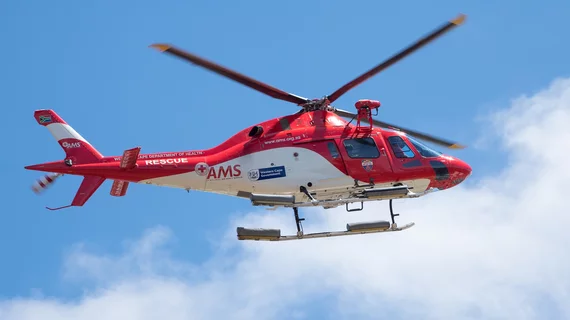CT scans set to take flight in new project that aims to integrate imaging into air ambulances
The advancement of medical imaging has taken off exponentially over the last decade. With virtually limitless potential, experts are now banking on the specialty’s ability not just to take off, but to lift off—into the air, to be more specific.
Efforts to advance Helicopter Emergency Medical Services (HEMS) are focusing on the potential utility of integrating advanced medical imaging into the far-reaching flights that cater to rural populations. In collaboration with Airbus, the Norwegian Air Ambulance Foundation is spearheading efforts to incorporate CT scanners into emergency helicopters.
“We aim to save more lives and improve the health of patients. Helicopter emergency services bring the hospital to the patient—wherever they are at the time of critical illness or injuries—and we are constantly working on ways to make it even better,” explained Hans Morten Lossius, Secretary General of the Norwegian Air Ambulance Foundation.
Norway records nearly 15,000 stroke patients every year, many of whom live in rural areas that staunchly inhibit access to hospitals that can provide stroke care. In an effort to “bring the hospital to the patient,” experts are testing the compatibility of mobile stroke units that include in-flight CT scans. If accomplished, patients could receive a diagnosis and have appropriate treatment initiated before even reaching the hospital.
Of course, achieving such an ambitious goal does not come without its challenges. When implementing any new equipment into a helicopter, weight is an important factor to consider. Since CT scanners aren’t exactly known for their slim physiques, experts are assessing the utility of nano-technology. Though the technology’s development is ongoing, experts involved in the initiative believe that it could be the key to eventually integrating CT scanners into air ambulances.
“The colleagues at Airbus have been great in supporting us with 3D models and measurements of the helicopter. Also, the knowledge about the architecture of the helicopter has helped us to find the right areas to install our devices in the cabin.”
The Norwegian Air Ambulance Foundation is using a newly acquired five-bladed H145 helicopter to develop and test the technology and hopes to have a CT scanner implemented into it in the next four to five years.
For more information on the project, visit Airbus.com.

